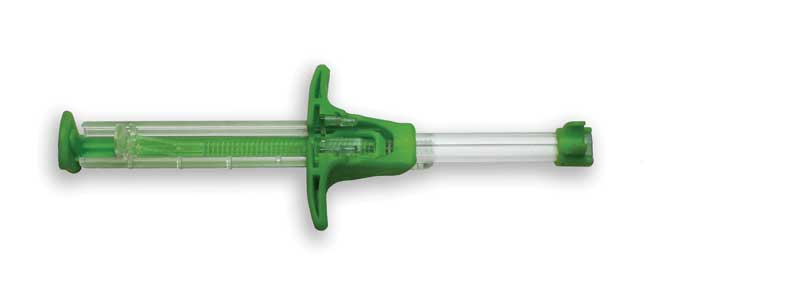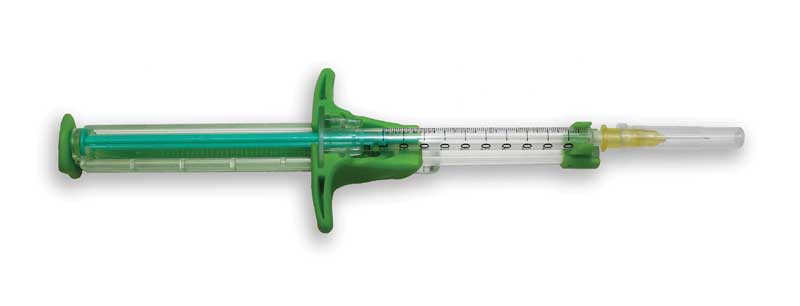Dear Editor:
No other single medical product has revolutionized and quite literally defined the aesthetic medicine field like botulinum toxin injections.1–5 Every year, a growing number of patients experience the cosmetic benefits of neurotoxin products as indications for use expand and new formulations are introduced into the marketplace.6 The vast clinical experience gained over the previous two decades has refined and personalized the injection method to accommodate differing facial anatomies, muscle dynamics, age groups, sexes, ethnicities, and patient preferences.7–13 Indeed, the technique has evolved beyond a one-size-fits-all approach emphasizing facial paralysis toward the adoption of a tailored treatment protocol, resulting in a more aesthetically pleasing, natural, and relaxed appearance.8,13,14
While large, fixed doses and standard injection patterns have been used in clinical trials to support regulatory approval, they do not reflect the current clinical paradigm, which favors a patient-specific approach to the placement and dose of neurotoxin injections.15–17 In fact, two recently convened consensus panels on the clinical effectiveness of neurotoxins both concluded that a patient-tailored approach utilizing small doses of botulinum toxin distributed over a greater number of injection sites was the optimal method to achieve a more natural appearance.8,14
Additionally, as clinical practice always precedes regulatory clearance by many years in the case of neurotoxins, expanded neurotoxin aesthetic applications, such as in the lower face using small-volume, intradermal injections have generated great enthusiasm.14,18–21 Similarly, younger women are increasingly recognizing the aesthetic benefits of botulinum toxin and are seeking to proactively maintain a youthful countenance while retaining some facial animation during emotive expression.11,14 This, in turn, necessitates a unique dosing strategy employing discretely-placed, small-volume doses.9
The convergence of these encouraging trajectories in cosmetic medicine demands a new level of expertise to deliver consistently small-volume doses at varying tissue depths and to have the ability to precisely adjust on-the-fly to areas that require more and/or differing units of neurotoxin based on patient-specific characteristics.
Historically, botulinum toxin injections have been delivered using the freehand technique with a standard, disposable syringe which has been a satisfactory method when facial paralysis was the primary goal. However, with the shift toward neuromodulation as a treatment objective, the demands on the injector to master and consistently maintain small dose accuracy intensify. In fact, injection dose accuracy with the freehand method worsens with smaller doses and may exceed the proprioceptive ability of the hand and syringe interface.22,23 Kwolek and Block24 recently reported that the average accuracy error associated with freehand injection of 40 consecutive single units (0.025mL/unit) from a 1.0cc disposable syringe was approximately 10 percent for two highly-experienced injectors. Notably, one injector consistently over injected and the other injector consistently under injected with respect to the target value of 0.025mL.
Accurate dose injection has become paramount if we are to assure patients reproducibly excellent aesthetic results under the current treatment paradigm.14 This objective takes on additional salience as physician extenders, often injecting in the medical spa environment, become the fastest growing segment of new botulinum toxin practitioners.25,26
Recognizing the urgency to enhance dose accuracy, particularly for small-volume injections, a number of neurotoxin-dedicated devices have been developed and are undergoing clinical and regulatory assessment.24,27 The 3Dose™ (Vlow Medical™) is a mechanically-operated, disposable specialty syringe and the Juvapen (Juvaplus SA) is a multi-use, cordless, battery-operated syringe holder. There have been no published, peer-reviewed articles demonstrating injection accuracy for either of these devices. However, a study of the single-use, disposable Injection Assist Device (KB Medical LLC) reported an average accuracy error of approximately one percent for one unit (0.025 mL) injections.24 This device has the advantage of acting as an accessory to a standard syringe, maintaining the familiar syringe preparation procedures and injection ergonomics and requiring little or no learning curve (Figure 1). There is growing enthusiasm for these injection assist devices not only as instructional tools for new injectors but also for experienced injectors to facilitate a broader scope of aesthetic applications.


The number of botulinum toxin procedures, the range of aesthetic indications, and the breadth of new practitioners continue to expand. At its core, these metrics are exceptionally encouraging as more and more patients experience the aesthetic benefits of the appropriate use of neurotoxins. That said, we must remain diligent with respect to the overarching clinical goal of achieving a consistently high quality of aesthetic outcomes, appreciating that the current treatment paradigm requires a more delicate touch, and recognizing that this goal can only be achieved by adopting sufficiently accurate injection techniques.
With regard,
Steven G. Yoelin, MD; Marilyn S. Kwolek, MD; and Jon E. Block, PhD
Affiliations. Drs. Yoelin and Kwolek are in private practice in Newport Beach, California and Danville, California, respectively. Dr. Block is an independent consultant in San Francisco, California.
Funding. No funding was provided.
Disclosures. Drs. Kwolek and Block are Co-founders of KB Medical LLC (Las Vegas, NV).
Correspondence. Jon E. Block, PhD; Email: jb@drjonblock.com
Reference
- Carruthers A, Kane MA, Flynn TC, et al. The convergence of medicine and neurotoxins: a focus on botulinum toxin type A and its application in aesthetic medicine—a global, evidence-based botulinum toxin consensus education initiative: part I: botulinum toxin in clinical and cosmetic practice. Dermatol Surg. 2013;39(3 Pt 2):493—509.
- Carruthers J, Fournier N, Kerscher M, Ruiz-Avila J, Trindade de Almeida AR, Kaeuper G. The convergence of medicine and neurotoxins: a focus on botulinum toxin type A and its application in aesthetic medicine—a global, evidence-based botulinum toxin consensus education initiative: part II: incorporating botulinum toxin into aesthetic clinical practice. Dermatol Surg. 2013;39(3 Pt 2):510–525.
- Fagien S, Carruthers JD. A comprehensive review of patient-reported satisfaction with botulinum toxin type a for aesthetic procedures. Plast Reconstr Surg. 2008;122(6):1915–1925.
- Ibrahim O, Keller EC, Arndt KA. Update on botulinum neurotoxin use in aesthetic dermatology. Semin Cutan Med Surg. 2014;33(4):152–156.
- Lanoue J, Dong J, Do T, Goldenberg G. An update on neurotoxin products and administration methods. Cutis. 2016;98(3):163;166;197.
- Gart MS, Gutowski KA. Overview of Botulinum Toxins for Aesthetic Uses. Clin Plast Surg. 2016;43(3): 459–471.
- Ahn BK, Kim YS, Kim HJ, Rho NK, Kim HS. Consensus recommendations on the aesthetic usage of botulinum toxin type A in Asians. Dermatol Surg. 2013;39(12):1843–1860.
- Anido J, Arenas D, Arruabarrena C, et al. Tailored botulinum toxin type A injections in aesthetic medicine: consensus panel recommendations for treating the forehead based on individual facial anatomy and muscle tone. Clin Cosmet Investig Dermatol. 2017;10:413–421.
- Bonati LM, Fabi SG. Treating the Young Aesthetic Patient: Evidence-Based Recommendations. J Drugs Dermatol. 2017;16(6):s81-s83.
- Keaney TC, Alster TS. Botulinum toxin in men: review of relevant anatomy and clinical trial data. Dermatol Surg. 2013;39(10): 1434–1443.
- Narurkar V, Shamban A, Sissins P, Stonehouse A, Gallagher C. Facial treatment preferences in aesthetically aware women. Dermatol Surg. 2015;41 Suppl 1:S153–160.
- Sundaram H, Huang PH, Hsu NJ, et al. Aesthetic Applications of Botulinum Toxin A in Asians: An International, Multidisciplinary, Pan-Asian Consensus. Plast Reconstr Surg Glob Open. 2016;4(12):e872.
- Sundaram H, Signorini M, Liew S, et al. Global Aesthetics Consensus: Botulinum Toxin Type A—Evidence-Based Review, Emerging Concepts, and Consensus Recommendations for Aesthetic Use, Including Updates on Complications. Plast Reconstr Surg. 2016;137(3):518e-529e.
- Kaminer MS, Cox SE, Fagien S, Kaufman J, Lupo MP, Shamban A. Re-examining the Optimal Use of Neuromodulators and the Changing Landscape: A Consensus Panel Update. J Drugs Dermatol. 2020;19(4):s5–15.
- de Almeida AR, da Costa Marques ER, Banegas R, Kadunc BV. Glabellar contraction patterns: a tool to optimize botulinum toxin treatment. Dermatol Surg. 2012;38(9):1506–1515.
- Dover JS, Monheit G, Greener M, Pickett A. Botulinum Toxin in Aesthetic Medicine: Myths and Realities. Dermatol Surg. 2018;44(2):249–260.
- Steinsapir KD, Rootman D, Wulc A, Hwang C. Cosmetic Microdroplet Botulinum Toxin A Forehead Lift: A New Treatment Paradigm. Ophthalmic Plast Reconstr Surg. 2015;31(4):263–268.
- Awaida CJ, Jabbour SF, Rayess YA, El Khoury JS, Kechichian EG, Nasr MW. Evaluation of the Microbotox Technique: An Algorithmic Approach for Lower Face and Neck Rejuvenation and a Crossover Clinical Trial. Plast Reconstr Surg. 2018;142(3):640–649.
- Lee SK. Multiple intradermal small bolus injection of botulinum toxin: the limit and the potentiality. J Cosmet Laser Ther. 2012;14(6):304–306.
- Wu WT. Microbotox of the Lower Face and Neck: Evolution of a Personal Technique and Its Clinical Effects. Plast Reconstr Surg. 2015;136(5 Suppl):92S–100S.
- Zhu J, Ji X, Xu Y, et al. The efficacy of intradermal injection of type A botulinum toxin for facial rejuvenation. Dermatol Ther. 2017;30(1).
- Thobani SU, Steward DJ. The accuracy and variability of bolus injections with different sized syringes. Can J Anaesth. 1992;39(2):198–201.
- Erstad AJ, Erstad BL, Nix DE. Accuracy and reproducibility of small-volume injections from various-sized syringes. Am J Health Syst Pharm. 2006;63(8):748–750.
- Kwolek MS, Block JE. Maximizing botulinum toxin injections for cosmetic and therapeutic applications with a single use, disposable, exact dose injection assist device. Clin Cosmet Investig Dermatol. 2019;12:35–46.
- Goldman MP. Technology approaches to the medical spa: art plus science equal rejuvenation. Dermatol Clin. 2008;26(3): 327–340, v.
- Matheson-Shedrick K. Spas unwrapped. J Med Pract Manage. 2008;24(3):166–169.
- Bertossi D, Mortellaro C, Nocini P. New Clinical Analysis and Device for Botox Injections. J Craniofac Surg. 2016;27(6):1554–1557.

